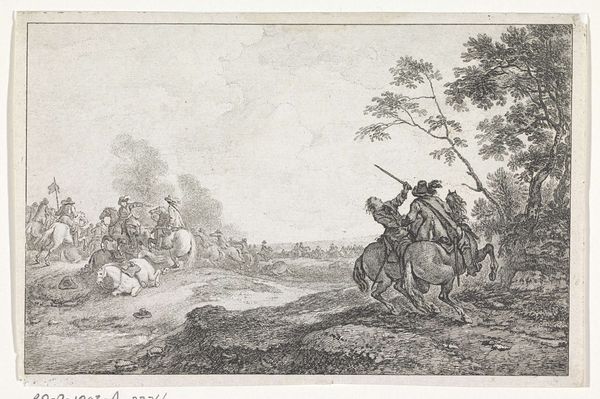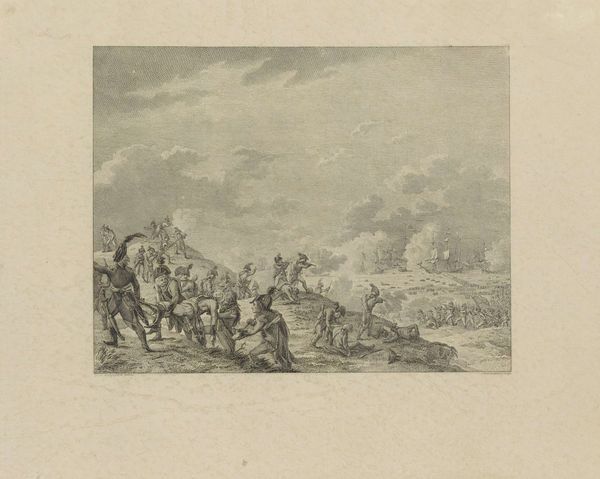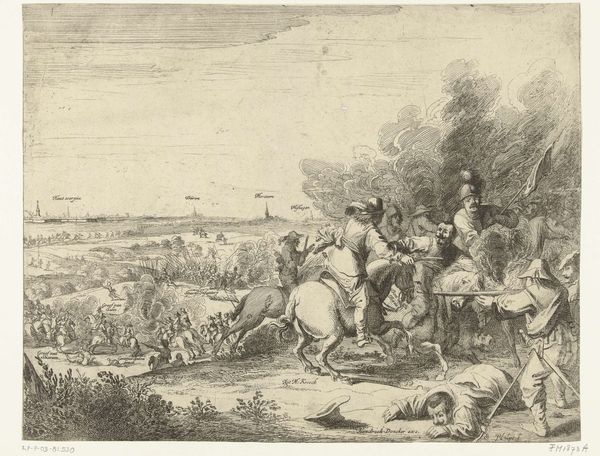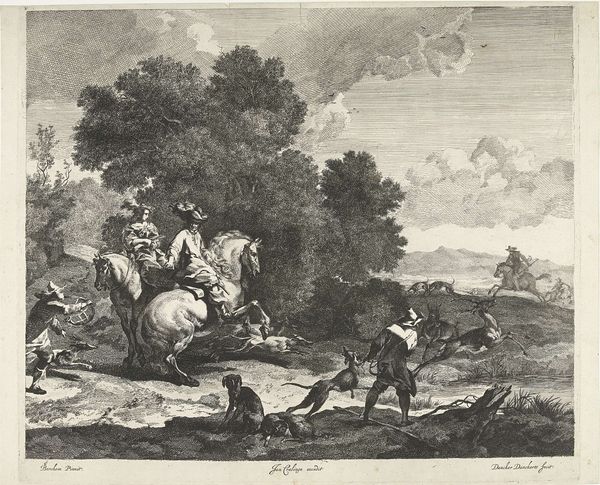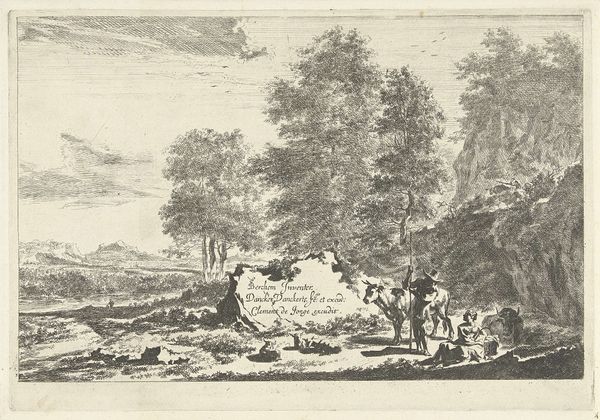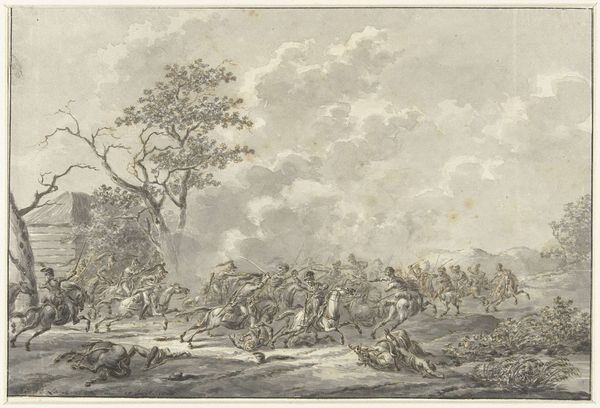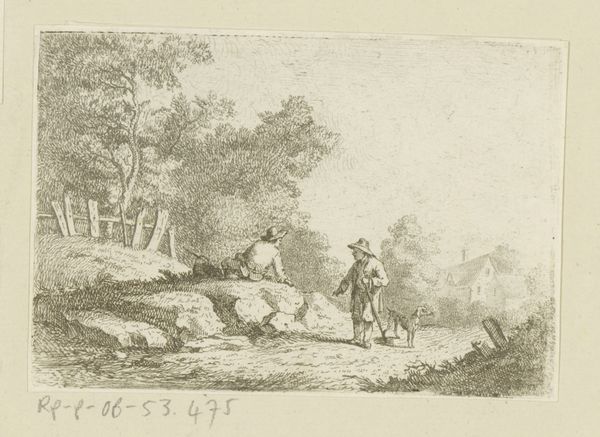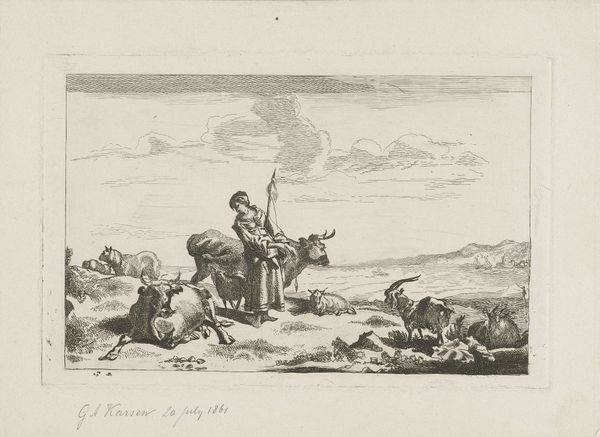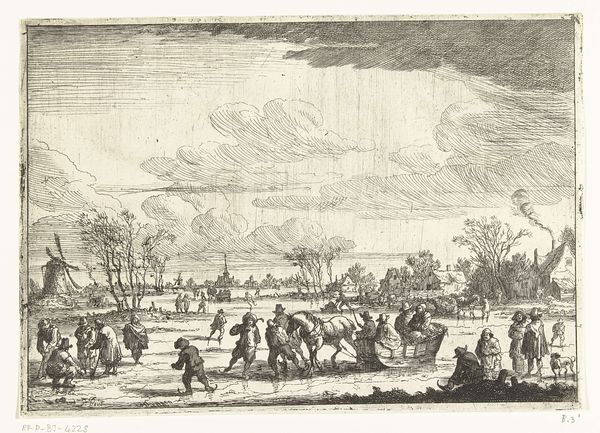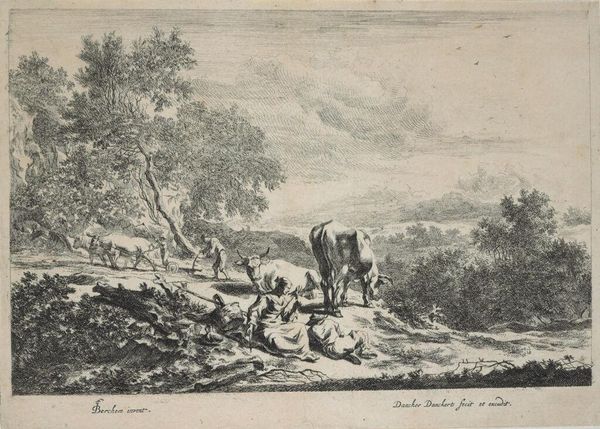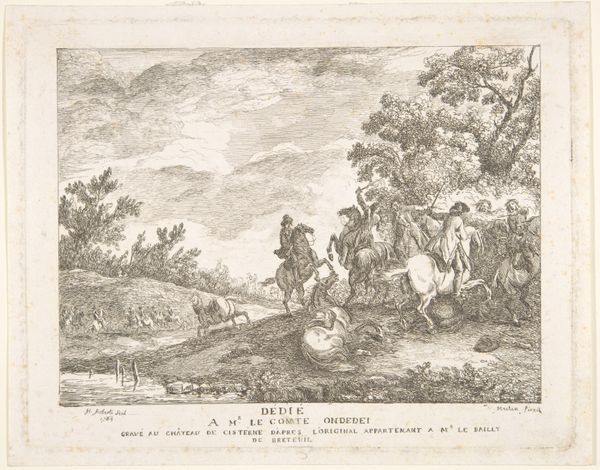
print, engraving
#
narrative-art
#
baroque
# print
#
landscape
#
figuration
#
genre-painting
#
history-painting
#
engraving
Dimensions: height 129 mm, width 198 mm
Copyright: Rijks Museum: Open Domain
Curator: So, here we have “Ruitergevecht,” or "Cavalry Battle," an engraving likely from between 1650 and 1750, its maker currently unknown. It's held right here at the Rijksmuseum. What jumps out at you? Editor: Oof, it’s chaotic, isn't it? Like a freeze-frame from a particularly rough historical reenactment. I feel the grit and the tumble. Are those fellows up to no good or just having a disagreement about land boundaries? Curator: Ah, the universal ambiguity of conflict. Symbolically, the fallen horse takes centre stage. It really pulls the eye. One wonders, does the vulnerable pose evoke more sympathy than that of the victorious rider? It also subtly reinforces notions about the chaos of war, but more important is it a simple tale, or does it stand for something grander? Editor: That's fascinating. The toppled horse does shift the focus. Often in these action scenes, it's about the triumphant hero. But the vulnerability of the animal speaks volumes. To me it resembles the aftermath more so then an on-going action: figures and movement are reduced into forms and signs, and what stands out, besides, the falling horse, is the pointing figures further away into the horizon. Who or what is out there to trigger such pointing response? It does pull you in, questioning who exactly are the victors in this scenario, as, technically there are at least six active figures Curator: Indeed. And then you notice the landscape, doesn't it soften things somewhat? It becomes the backdrop against which these little human dramas are played. I mean look closely, beyond that tussle in the front we notice some movement. What could that indicate? Could it represent historical records of wars or political strifes during that period. It can all be left for individual interpretations. Editor: I get it, as landscapes tend to mirror or impact emotional or narrative moments, it speaks on the scale of historical dramas, yet also its impact is timeless in the scope of history painting. What feels contemporary to me is that hat placed upside down on the front. The sign and memory of those action. The way everything moves inward from foreground to background into the distance where something new could appear and disrupt the balance. Curator: Yes, a detail often overlooked but powerful indeed! Editor: Well, considering the many layers this particular image offers for those who see it today. This piece has revealed its complexity while discussing it. So different things stand out as meaningful. I didn’t anticipate that.
Comments
No comments
Be the first to comment and join the conversation on the ultimate creative platform.
